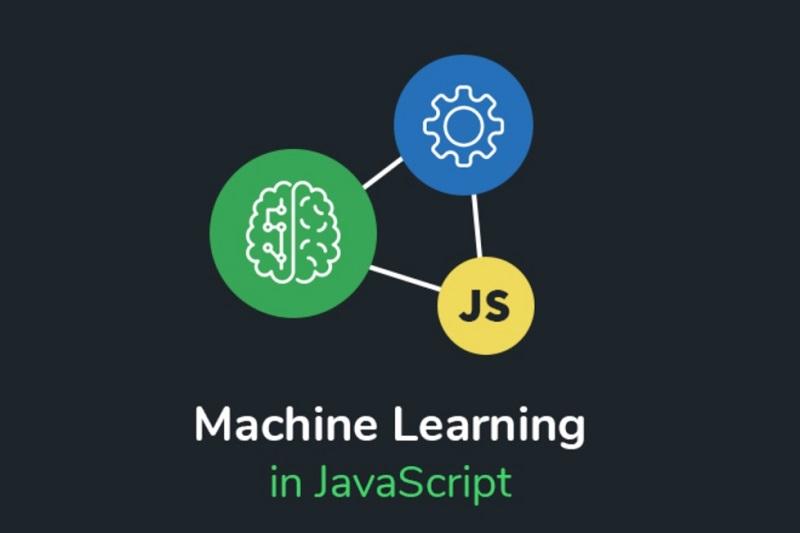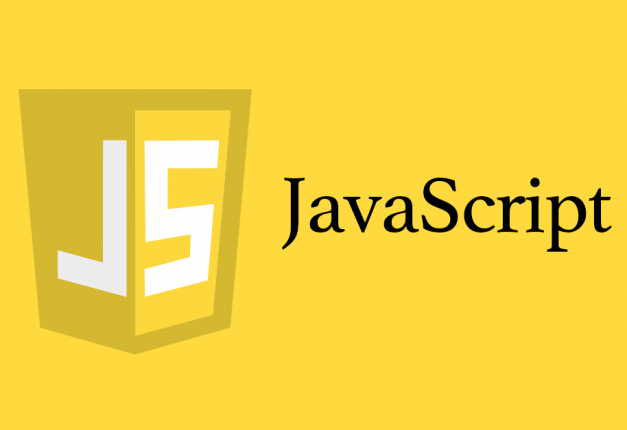Top 10 JavaScript Libraries for Machine Learning & Data Science in 2025
While programmers used JavaScript to build various projects, JavaScript was still recognized as a programming language in web development.
Thanks to powerful programming languages such as R and Python, specifically used for data science and machine learning, and a wide range of rich libraries supporting these two languages, most programmers and developers use these two languages.
It Used Them in connection with artificial intelligence projects. However, in the past few years, JavaScript has grown so much that more people have become interested in programming. As a result, powerful machine learning and data science libraries have been developed for the language.
So that today, developers can use JavaScript to interact with the libraries provided for this language in the world of artificial intelligence.
This article introduces the top 10 JavaScript libraries widely used by programmers in developing natural language processing and machine learning projects.
Suppose you are looking for libraries that are developed for JavaScript and can be used in projects like machine learning and data science, big names like nlp.js, D3.js, or Chart.js (which can be used for data visualization). In that case, you come across Brain.js and TensorFlow.js. The critical thing to mention in this context is that implementing machine learning models and programs in the form of user-side services in browsers has provided new opportunities for researchers and created a new software development platform for machine learning developers.
Interestingly, the ability to run machine learning models in browsers is a new field of research and programming called ” machine learning systems.”
This has created “Interactive Machine Learning.”
You can implement various machine learning or data science capabilities in JavaScript using these libraries, both in browsers and in the background using Node.js.
In a notable example, during the 2018 TensorFlow Developer Summit, two programmers from the TensorFlow library development team demonstrated the process of training a machine learning model to control a PAC-MAN game using computer vision and a webcam. . a critical feature is the presentation of how the machine learning library works in JavaScript(TensorFlow.js) was that ultimately did all steps of program execution (model training and PAC-MAN game control using computer vision and webcam techniques) in the web browser. This introduction will introduce the best JavaScript libraries in machine learning, natural language processing, and data visualization.
1. Brain.js
Brain.js is a JavaScript library for machine learning and neural networks in particular. The above library has a high-speed performance because it uses the GPU for calculations and the ability to return to normal mode and execute JavaScript commands. Brain.js can implement different types of neural networks when the GPU is unavailable. The positive thing about the above library is that you don’t need a deep knowledge of neural networks to use this library. You can also import models into your project or website as a function or JSON format.
This library provides various services, such as math routines, to developers. Among the essential capabilities that the above library offers developers is asynchronous training that can coordinate with multiple parallel networks, cross-validation, a complex and valuable validation method, using the GPU for network training, and saving and loading information using the specified JSON file.
2. TensorFlow.js
TensorFlow.js is a JavaScript machine learning library with comprehensive and flexible tools, libraries, and resources related to machine learning. You can run the official TensorFlow models that are already available or your Python models using this library. It also makes pre-built machine learning models available for developers to train using their data. In addition, you can use machine learning models anywhere in the cloud, browser, embedded, or on systems.
In general, we must say that TensorFlow.js is a version of TensorFlow with various features such as TensorFlow Lite for mobile devices, TensorFlow Rust for Rust connections, TensorFlow Extended, etc. The library is a good starting point for learning topics related to deep learning, computer vision, and neural networks for beginner programmers and JavaScript enthusiasts.
3. Synaptic
Synaptic is a JavaScript neural network library developed for Node.js and browsers. The above library allows for importing or exporting grids to JSON as standalone functions; Networks that can interact with other networks. In addition, the above library supports built-in architectures such as Liquid State Machine, Long Short Term Memory (LSTM) networks, multilayer perceptrons, Hopfield networks, etc.
In addition, they can combine with different types of networks and training sets. Synaptic is an open-source library under the MIT license, so any developer can use it for free or contribute to its development.
4. ConvNetJS
ConvNetJS is a JavaScript library used explicitly for training deep learning models involving neural networks. The advantage of the above library is that it can be used entirely in the browser, without the need for dedicated software to work with the GPU, compiler, etc. In addition, the development team is working on a reinforcement learning module to develop reinforcement learning projects with this library.
5. ml5.js
ml5.js is a JavaScript machine learning library developed based on TensorFlow without external dependencies. The above library enables access to various pre-trained machine learning algorithms in browsers that recognize human gestures, style images, generate text, find relationships between English words, make music, and more.
ml5.js provides exceptional capabilities for people who want to collect data responsibly that preserves the privacy of individuals or companies. In addition, the dataset can be used in connection with machine learning projects.
6. nlp.js
nlp.js is a JavaScript-based natural language tool for Node.js. The above library provides various functions such as guessing the language used in a phrase, stemming (Stemmer), and unitizer (tokenizer), which recognizes word boundaries in texts and converts the text into a sequence of words for further analysis. In addition, nlp.js can analyze sentiment in different expressions written in the same language.
Also, you can classify concepts and then generate a sentence response based on the idea you specified using the Language Processing Classifier and the Natural Language Generation Manager. nlp.js supports 40 languages and additionally supports 104 languages based on the BERT integration model.
7. Compromise
Compromise is a JavaScript library focused on natural language processing to simplify text interpretation and prepare to make decisions based on text content.
The Compromise can compress or shorten words and write complete terms or phrases based on the content of the text. The above library can handle 99.99% of the entire English vocabulary with 14,000 words to create a file that takes up only 40KB of space. The above approach caused the Compromise to have a millisecond delay in understanding and scanning words.
8. D3.js
D3, or Data-driven, is a JavaScript library that can manipulate data using HTML, CSS, and SVG for custom data visualization. D3 can combine documents with an object-oriented document model and then transform the paper based on the specified requirements.
In addition, D3 has various charts for data analysis, such as histograms, treemaps, bar charts, scatter graphs, line charts, pie charts, etc. D3 also supports animation. Options such as animated tree maps, zoomable bar charts, icicle charts, char races, etc., are some features that the above library provides to developers.
9. Chart.js
Chart.js is an open-source JavaScript charting library that provides access to 8 extensive chart types and supports standard charts such as bar charts, pie charts, histograms, scatter graphs, error charts, and more. It is possible to combine all charts.
It also supports animation. Chart.js can quickly render in all web browsers and adjust the chart according to the size of the web browser window. All graphs in this library can combine with the moment.js library if a time axis is needed.
10. Sigma.js
Charts are an essential part of data visualization, and sigma.js is focused explicitly on charting. The above library has built-in features for illustrating graphs and publishing them on web pages.
Sigma.js supports Canvas and WebGL and provides developers with options for better mouse and touchpad usage, custom rendering, and accessibility. The above library allows you to change data, move your camera, generate events, and render in any way you want to create the highest level of interactivity with graphs.
Last word
This article briefly introduced the top 10 JavaScript libraries used in machine learning and data science projects. While JavaScript is not as popular as Python or R in these fields, it is gaining more and more attention from developers these days. For example, D3 is an essential and famous library related to data visualization.
So, we suggest you check out the above libraries. Suppose developers continue to support JavaScript in this way. In that case, it is not far off to expect that in the future, JavaScript, along with Python and R, will become one of the leading choices when coding machine learning or data science projects. become
FAQ
What is TensorFlow.js?
TensorFlow.js is an open-source library developed by Google that enables developers to build and train machine learning models directly in the browser or on Node.js. It supports a wide range of machine learning tasks, including deep learning, and allows for the import of existing TensorFlow models for seamless integration.
How does Brain.js differ from TensorFlow.js?
Brain.js is a lightweight JavaScript library focused on neural networks. It offers a simpler interface compared to TensorFlow.js, making it more accessible for developers new to machine learning. Brain.js supports various types of neural networks and can run both in the browser and on Node.js.
What is ML5.js used for?
ML5.js is a high-level library built on top of TensorFlow.js, designed to make machine learning more accessible to artists, designers, and educators. It provides easy-to-use interfaces for common machine learning tasks like image classification, sentiment analysis, and pose detection, enabling quick integration into web applications.

